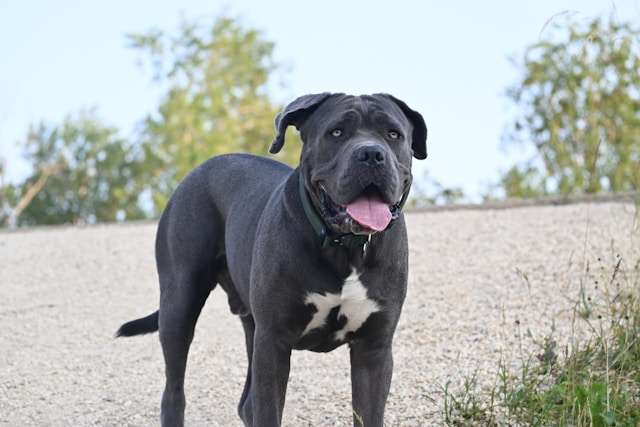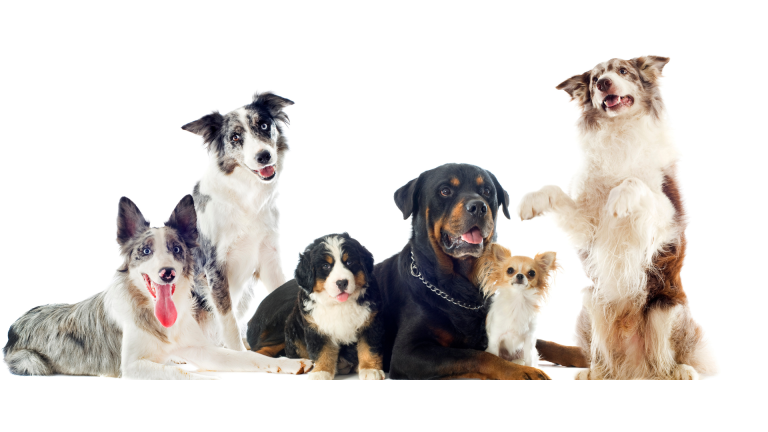10 Fascinating Facts About Australian Shepherds You Didn’t Know

Despite their name, Australian Shepherds aren’t Australian at all. These dogs have become one of America’s most popular breeds. Their striking blue eyes and remarkable intelligence match those of a two-year-old child.
We’ve found that there was much more to these versatile dogs than their herding talents. These fantastic animals keep surprising researchers and owners with their unique genetic traits and extraordinary problem-solving abilities. Anyone who wants to learn about this breed or is considering getting Australian Shepherd puppies should know ten surprising facts. These facts highlight why Aussies are unique in the canine world, ranging from their mysterious Basque roots to their Hollywood success stories.
Table of Contents
The Surprising Truth About Their Origins
I love discovering how different dog breeds got their names. The Australian Shepherd’s story is one of the most fascinating cases of mistaken identity in the dog world.
Why They’re Not Australian
Most think Australian Shepherds come from Australia, but this breed originated in the western United States [1]. The name has puzzled people for decades. This misconception traces back to the sheep trade of the 1800s. Ships arrived in Seattle, Washington, with Australian sheep; these talented herding dogs managed the flocks [2].
The Basque Connection
The American West’s heritage runs deep in this breed’s blood and shares excellent connections to European shepherding traditions. Here are some key developments in the breed’s lineage:
- Pastoral dogs brought to North America started this breed’s story as early as the 1500s
- The Care Leonés, a mountain sheepdog from Spain, influenced their development
- States like California, Colorado, Wyoming, and Idaho shaped the breed through careful breeding [3]
Their Rise to Fame in the American West
The Australian Shepherd’s popularity exploded in the 1950s. These versatile dogs captured America’s heart through their impressive performances. Jay Sisler’s famous trick-dog acts at rodeos showcased the breed’s extraordinary talents [4]. Their recognition grew steadily. The first club was formed in 1957, and the National Stock Dog Registry started official registrations [4].
These dogs adapted to the challenging conditions of the American West in remarkable ways. The Rocky Mountains proved perfect for them because they knew how to work at high altitudes better than other herding breeds [5]. Ranchers valued these legendary sheepherders so much that they traveled from California to Colorado to buy them [5].
The breed evolved from a working dog to a beloved companion as the digital world of American agriculture changed. By 2013, the Australian Shepherd ranked as the 20th most popular breed in the United States [5]. Its appeal now reaches way beyond the reach and influence of its working dog origins.
Unique Genetic Traits That Make Them Special
Let me tell you something that amazes me about Australian shepherds – their unique genetic makeup makes them different from other breeds. We’ve learned some pretty amazing things that make these dogs one of a kind.
The Science Behind Their Eye Colors
Australian Shepherd’s eyes can stop you in your tracks with their stunning variety. These dogs can show an impressive range of eye colors:
- Golden and lemon-yellow
- Light to dark amber
- Various shades of brown
- Striking blue
- Mesmerizing green
- Captivating orange
I love how these colors mix and match in unique ways. Some Aussies have two different-colored eyes, and some even have multiple colors in the same iris—that’s called heterochromia iridis [6].
Natural Bobtail Genetics
The natural bobtail trait in Australian Shepherds has taught us some fascinating things. Studies show that about 20% of Aussies are born with naturally bobbed tails [7]. A puppy needs just one copy of this gene to have a shorter tail – scientists call this autosomal dominant inheritance [8].
But we need to be careful with this trait. Two natural bobtail carriers that mate will have a 25% smaller litter size because of genetic complications [8]. That’s why genetic testing before breeding is so important.
Color Pattern Inheritance
The way colors work in Australian Shepherds is something special. Black beats out the liver (red) in the genetic lottery, creating the beautiful variations we see [9]. The merle pattern comes from its own separate gene, adding another complexity layer [10].
You might find it interesting that a blue merle is a black dog wearing the merle pattern like a coat, while a red merle starts as liver-colored before the pattern shows up [9]. The merle gene works like a painter, creating those beautiful marbled patterns everyone loves.
It’s worth mentioning that breeding needs extra care when it comes to these traits. Breeding two merle dogs can lead to serious health issues, especially vision and hearing [11]. Responsible breeding practices are vital to keeping our Australian Shepherds healthy and beautiful.
Record-Breaking Achievements
Australian Shepherds continue to expand what we believe is possible in breaking records and achieving greatness. These fantastic dogs have made their mark in competitions and entertainment.
Oldest Competing Australian Shepherd
Senior dogs that defy age expectations never cease to amaze me. One Australian Shepherd’s story stands out. This remarkable dog competed in the AKC Rally Nationals at 15 years old. The breed’s longevity and unwavering spirit shine through this achievement [12].
Notable Agility Records
The competition ring has seen some incredible performances. Grace, a Brazilian-bred blue merle female, stands as the top-winning Australian Shepherd in breed history. She earned a soaring win with three Best of Breed titles at the United States Australia Shepherd Association National Specialty in 2014, 2016, and 2018 [13].
Daiquiri’s recent achievements are even more impressive. This talented blue merle broke 12 Guinness World Records. One of Daiquiri’s most impressive feats was removing 21 socks from people’s feet in just 60 seconds [14]. The breed shows its versatility through several competition programs:
- Championship Program with three divisions: Standard, Veteran Dog, and Junior Handler
- ACE Program offers two divisions for different age groups
- Three titling classes: Regular, Jumpers, and Gamblers [15]
Famous Movie Stars Aussies
Australian Shepherds’ entertainment careers have been nothing short of spectacular. Pippen showed the breed’s intelligence and adaptability as Fly in the 1995 movie “Babe” [16]. These canine actors have helped showcase Australian Shepherds’ talents beyond their herding roots.
Secret became another standout star. Mary Peters’ extraordinary Australian Shepherd won hearts worldwide with excellent skills. This talented dog knew how to mop floors, paint, play piano, dance, and do yoga [14]. These entertainment achievements have helped Australian Shepherds become known as one of the most capable breeds in work and performance.
Extraordinary Intelligence Features
My years of studying canine intelligence have amazed me by Australian Shepherds’ cognitive abilities. These remarkable dogs show us how sophisticated their mental capabilities can be. Let me share what research tells us about their extraordinary intelligence.
Problem-Solving Capabilities
Australian Shepherds excel at problem-solving naturally. These dogs see opportunities where others might see roadblocks. I love their ability to think independently and make their own decisions [17]. They shine, especially when situations require critical thinking, and they never give up when faced with complex puzzles.
Here are the core traits that make their problem-solving stand out:
- Independent decision-making capabilities
- Quick adaptation to new challenges
- Natural ability to overcome obstacles
- Strong motivation to find solutions
Language Comprehension Studies
Research reveals fascinating insights about Australian Shepherds’ language abilities. A newer study, published in [18], shows dogs understand about 89 words and phrases. Herding dogs, including Australian Shepherds, showed better response rates to words than other breeds [18].
Scientists have found that dogs don’t process phonetic details like humans do but actively listen to human speech [19]. This discovery helps us better understand how to train and communicate with Australian Shepherds.
Memory Test Results
Australian Shepherds’ memory capabilities stand out in recent studies. Research in controlled environments found apparent differences between age groups during spatial memory tasks. Young dogs (3-6 years) performed better at finding food than older dogs (9-11 years), with fewer mistakes in their first tries [20].
Their performance in standardized memory tests amazes me. Recent spatial memory experiments showed these dogs excel at:
- Remembering complex command sequences
- Recalling hidden objects’ locations
- Retaining training information long-term
Stanley Coren’s intelligence rankings place Australian Shepherds 42nd among 138 breeds [21]. This puts them well above average in overall canine intelligence [21]. Their intelligence goes beyond following commands – they often surprise us with their adaptive intelligence and natural problem-solving skills.
Hidden Talents Beyond Herding
Australian Shepherds have talents that go way beyond their traditional roles. These fantastic dogs can do much more than work in the pastures where they first became famous.
Search and Rescue Success Stories
Because of their intelligence and stamina, these remarkable dogs make exceptional search and rescue (SAR) workers. SAR Australian Shepherds work effectively for extended periods and cover territories of all sizes in challenging conditions [22]. They show extraordinary physical endurance and mental focus as they work for many hours in terrains of all types [22].
SAR training starts as early as 10 weeks of age. Puppies learn simple obedience before moving on to more complex tasks [22]. Australian Shepherds excel at this work primarily when they handle challenging and potentially dangerous situations without showing fear [22].
Therapy Dog Achievements
Australian Shepherds shine in therapeutic settings with their calm demeanor and natural intuition. These qualities make them perfect companions for people in need. Their success shows in therapeutic environments like:
- Hospitals and hospice facilities
- Mental health institutions
- Rehabilitation centers
- Library reading programs [23]
These dogs seem to know who needs them most. Therapy Aussies comfort terminally ill patients and help reduce their anxiety during their final days [23]. They are a great way to get therapeutic support because they stay pleasant, patient, and calm in any situation [23].
Performance in Dog Sports
Australian Shepherds truly excel in competitive environments. These versatile dogs dominate multiple sports disciplines [24] and showcase their remarkable agility and intelligence. Their achievements include:
- Flyball racing through obstacle courses
- Treibball (herding balls into goals)
- Dock diving competitions
- Disk dog competitions [24]
I love Australian Shepherds’ adaptability in different sports. They become skilled at complex choreographed moves in canine dressage while excelling in high-energy sports like dock jumping [24]. Their natural athletic ability and eagerness to please make them tough competitors in any dog sport.
The breed’s versatility is officially recognized through various certification programs. These talented dogs must show proficiency in multiple disciplines to earn a Versatility Certificate. This includes conformation, obedience, tracking, herding, and agility [25]. The detailed testing proves that Australian Shepherds are masters of many trades.
Unusual Behavioral Quirks
My countless hours of watching these remarkable dogs have taught me so much about the quirky behaviors that make Australian Shepherds such unique companions. Let me share some of the most endearing and unusual traits I’ve learned.
The Famous ‘Aussie Smile’
Australian Shepherds have a distinctive way of showing joy—we lovingly call it the “Aussie smile.” This heartwarming expression isn’t just my imagination. Research shows these dogs display behaviors that look just like human smiles, especially during play or after meals [26]. The smile becomes even more special when you see their sparkling eyes and wagging tails, which indicate pure happiness [26].
Unique Sleeping Positions
Australian Shepherds have some of the most exciting sleeping habits ever. They sleep on their backs with paws in the air to show complete trust and security in their surroundings [27]. Here are some common positions and what they mean:
- The “Superman” pose – stretched out on their belly to cool down
- The “Donut” curl – a protective position while adjusting to their environment
- The “Side Sleeper” – shows complete relaxation and security [27]
Special Bonding Behaviors
The breed’s extraordinary bonding behaviors stand out from other dogs. Australian Shepherds create potent attachments to their families and often become protective of their owner’s property [28]. I love their unique way of showing affection—they prefer to sleep back-to-back with their favorite person, and research shows this demonstrates deep trust and intimacy [27].
These dogs show what I call “ghost herding” – they try to herd anything that moves unpredictably, from running children to vacuum cleaners [29]. This behavior comes from their strong herding instincts, which they demonstrate creatively.
Their whimsical sense of humor makes them unique [28]. They can switch from serious working dogs to playful companions in seconds. Their intelligence and personality create truly memorable moments – from their intense, focused stare (a signature of their working style) to their creative problem-solving approaches [29].
These dogs have an interesting quirk in their sensitivity to environmental changes. They can be remarkably perceptive and sometimes seem skittish in new situations [29]. Their incredible adaptability and strong desire to please their owners balance out this sensitivity [30].
My years with Australian Shepherds have shown me that these behavioral quirks have deep roots in their genetics and working heritage. Their strong bonding tendencies and protective instincts make them excellent family companions, though they need proper training to channel these instincts effectively [31].
Conclusion
Australian Shepherds prove that looks can be deceiving. My research and hands-on experience with these amazing dogs have led me to find a breed that surprises everyone. They challenge expectations in every way, from their misleading name to abilities that go way beyond herding.
These intelligent companions excel at everything they do. They break world records, work as therapy dogs, and master complex search and rescue operations. Their unique genes give them striking features and mesmerizing eye colors. These dogs’ problem-solving skills match those of young children.
My time spent with Australian Shepherds shows they build deep connections with their families. They have quirky personalities and tackle life with both smarts and enthusiasm. Their achievements in competitive sports and therapeutic work prove why they’ve become one of America’s favorite breeds.
These incredible dogs show us that excellence takes many forms. Their growth from simple herding dogs to adaptable working companions explains why they have kept winning hearts across generations.
Australian Shepherd FAQs
- What are some fascinating facts about Australian Shepherds? Australian Shepherds have a surprising origin—they’re not actually from Australia but likely originated in the Basque region of Spain. They’ve been known by various names throughout history. These dogs often have heterochromia, meaning they can have two different-colored eyes. Aussies are heavy shedders and are incredibly versatile, excelling in various jobs beyond herding.
- What unique characteristics define Australian Shepherds? Australian Shepherds are known for their exceptional intelligence, high trainability, and need for mental and physical stimulation. They have a distinctive personality that combines friendliness with a slight reserve towards strangers. Their versatility allows them to excel in various roles, from working dogs to loving companions. They also possess unique genetic traits, such as striking eye colors and natural bobtails in some individuals.
- Do Australian Shepherds typically form a strong bond with one particular person? While Australian Shepherds are generally affectionate towards their entire family, they may sometimes develop a special bond with one person. Their working dog heritage gives them a natural herding instinct, which they might apply to their human family members. However, with proper socialization, they can form strong attachments to multiple family members.
- Are Australian Shepherds known to be cuddly and sleep with their owners? Australian Shepherds often enjoy close physical contact with their owners. Many Aussies like to cuddle on the couch or even share the bed with their humans if allowed. This behavior stems from their desire to be close to their family and shows their strong bond and trust. However, it’s important to note that individual preferences may vary, and some Aussies might prefer their sleeping space.
- What are some unique behavioral quirks of Australian Shepherds? Australian Shepherds have several attractive behavioral traits. They’re known for their “Aussie smile,” a facial expression that resembles a human smile and often indicates happiness. They also have unique sleeping positions, each with meaning – for example, sleeping on their back with paws in the air shows complete trust. Aussies may display “ghost herding” behavior, attempting to herd moving objects or people. They also have a whimsical sense of humor and can quickly switch between working severe dogs and playful companions.
Best Dog Food For Australian Shepherds
References
[1] – https://en.wikipedia.org/wiki/Australian_Shepherd
[2] – https://www.akc.org/sports/herding/articles/aussie-history/
[3] – https://www.akc.org/expert-advice/dog-breeds/australian-shepherd-history/
[4] – https://www.southtexasaussierescue.org/about-aussies/
[5] – https://www.honeycreekaussies.com/history.php
[6] – https://toyminiaussies.net/aussie-info/breed-eye-color
[7] – https://rockykanaka.com/are-australian-shepherds-born-with-tails/
[8] – https://vgl.ucdavis.edu/test/natural-bobtail
[9] – https://asca.org/aussies/about-aussies/health-and-genetics/color-coat/
[10] – https://asca.org/aussies/about-aussies/health-and-genetics/basic-genetics/
[11] – https://www.ashgi.org/home-page/genetics-info/faq/coat-color
[12] – https://akc.tv/watch/6/6592/episode/episode?id=11888
[13] – https://www.purinaproclub.com/about/awards/conformation/australian-shepard-gracie-sets-best-in-show-breed-record
[14] – https://www.theaustralianshepherd.blog/2024/04/9-famous-australian-shepherds-thatll.html?m=1
[15] – https://asca.org/competitive-programs/agility/
[16] – https://www.youtube.com/watch?v=zDhI1sUmJyo
[17] – https://www.southtexasaussierescue.org/raising-an-australian-shepherd-temperament-and-development/
[18] – https://www.earth.com/news/dogs-can-understand-up-to-215-words/
[19] – https://www.akc.org/expert-advice/news/how-much-language-do-dogs-really-understand/
[20] – https://www.nature.com/articles/s41598-022-19918-7
[21] – https://vetericyn.com/blog/are-australian-shepherds-smart/?srsltid=AfmBOorkPtE33JU2OzdAgnfnVQWeVWwiNYwniR6aXwXD_oHb6ygDwrmm
[22] – https://www.australian-shepherd-lovers.com/search-and-rescue-dog-training.html
[23] – https://www.australianshepherdsfurever.org/assisting-aussies
[24] – https://www.australian-shepherd-lovers.com/dog-sports.html
[25] – https://australianshepherds.org/programs/versatility-awards-program/
[26] – https://toyaussiedog.com/do-australian-shepherds-smile-understanding-their-expressions/
[27] – https://www.caninecampus.us/9-dog-sleeping-positions-and-what-they-mean
[28] – https://asca.org/aussies/about-aussies/personality-and-character/
[29] – https://iheartdogs.com/the-most-unusual-habits-of-an-australian-shepherds/
[30] – https://www.thesprucepets.com/breed-profile-australian-shepherd-1117935
[31] – https://www.akc.org/dog-breeds/australian-shepherd/







One Comment